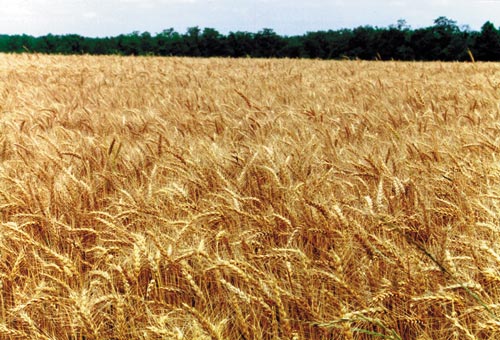April 5, 2011

A drier-than-normal winter has put this year’s winter wheat crop in good shape as it heads into the heavy growth stages of spring.
Erick Larson, grain agronomist with the Mississippi State University Extension Service, said the state has about 300,000 acres of wheat. This figure is up from the meager 125,000 acres harvested in 2010, but down from the recent high of 520,000 acres planted in 2008.
“The wheat crop is looking very good, and it is definitely in better shape than it was last year,” Larson said. “We have had very good conditions for wheat growth to this point, and I have high expectations if things continue the way they are now.”
Larson said dry fall weather allowed producers to prepare fields and plant all the wheat they wanted, although these conditions pushed planting slightly later than normal.
“Weather delayed growers from when they normally plant, but it wasn’t really a late wheat crop,” Larson said. “Those who were able to plant their intended acreage before it got wet closer to Thanksgiving generally have very good stands of wheat today.”
Some Delta wheat fields have signs of damage from migrating snow geese. As snow geese numbers have increased in recent years, farmers are reporting damage to fields when they congregate and grub up root systems after the top growth has been eaten. Wheat that has been just grazed can recover once the geese leave.
February was relatively dry for the state, and that was ideal for wheat’s growth in the tillering stages, the time when the established stand grows more yield-producing stems per plant.
“Normally, we have excessively wet conditions that limit growth during February and also may cause farmers difficulty as they try to apply nitrogen fertilizers and herbicides,” Larson said.
Wheat starts heading then setting grain in early April. Larson said environmental conditions through mid-May are key. Wheat favors relatively dry conditions and mild temperatures and is sensitive to freeze damage if a cold front comes through at or following heading.
Charlie Bush, Bolivar County Extension agriculture agent, estimated there may be as many as 20,000 acres of wheat in his county, about double what was planted the previous year.
“Overall it looks really good, but a couple of weeks ago, the melted snow and a lot of rain kept growth suppressed,” Bush said. “We weren’t really sure what kind of crop we’d have, but the wheat has really greened out and filled in the fields with the last couple weeks of dry, warm weather.”
Bush said area growers are optimistic about harvest. Fields that are planted in winter wheat will be double-cropped with soybeans when the wheat is harvested in June.
John Michael Riley, Extension agricultural economist, said wheat prices for the July contract are $7.44 a bushel. As of March 21, the U.S. Department of Agriculture reported a $7.22 per bushel price at the Greenville elevators.
These prices are down $2 a bushel since early February, caused by the increasing U.S. wheat carryover. The average price in 2010 was $4.90 per bushel.
“The events in Japan have taken center stage in all commodity markets,” Riley said. Despite the situation in Japan, exports currently remain strong, helped by the weaker U.S. dollar.”
You May Also Like




